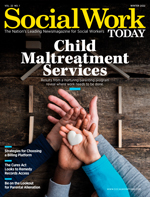|
In today’s connected world, not having information at our fingertips is practically a criminal offense. A moment without internet access sends otherwise rational people into a panic not seen since the days of Cabbage Patch Kids. From banking and shopping to house hunting and dating, we crave instant access to, well, everything. For some time, medical records lagged behind this trend. While consumers were applying for mortgages with one click on their smartphone, health systems made obtaining your own patient information a labyrinth of red tape topped off with exorbitant fees. However, the situation is changing, including in mental health settings. As explained in the feature on page 22, the Cures Act has been incrementally boosting patient access to therapy notes. In fact, later this year, another component of the act takes effect that states patients must be able to access their records via third-party apps. While it’s hard to argue against the merits of patients gaining more access to their health records, security concerns cannot be overlooked. Are mental health practitioners equipped to deal with the IT requirements and legalese necessary to flourish in a more “open” environment? It’s a situation worth monitoring. This issue’s cover story examines the effects of one home visitation program on protective factors intended to mitigate risk of child maltreatment. It’s a fascinating take on inherent biases, cultural differences, and family dynamics. Speaking of that last item, another feature dives into parental alienation (page 18), spotlighting how this process can devastate families and how social workers and other professionals can make a difference. I’ve witnessed the psychological damage that can be done when a parent drives one child to believe their partner is responsible for the dissolution of the marriage. In my situation, the mother worked very hard to drive a wedge between father and son. Despite the efforts of the father, the family’s other children, and medical professionals, the son remains estranged from his father, convinced that the father was the driving force behind the failure to keep everyone together. Recognizing the situation while it’s in progress is key to avoiding debilitating, life-altering family tragedies. Still, should the matter progress to the stage where harm is being done, there are, as the article discusses, solutions. |

 Editor’s Note: Making Medical Records Available and Secure at the Same Time
Editor’s Note: Making Medical Records Available and Secure at the Same Time